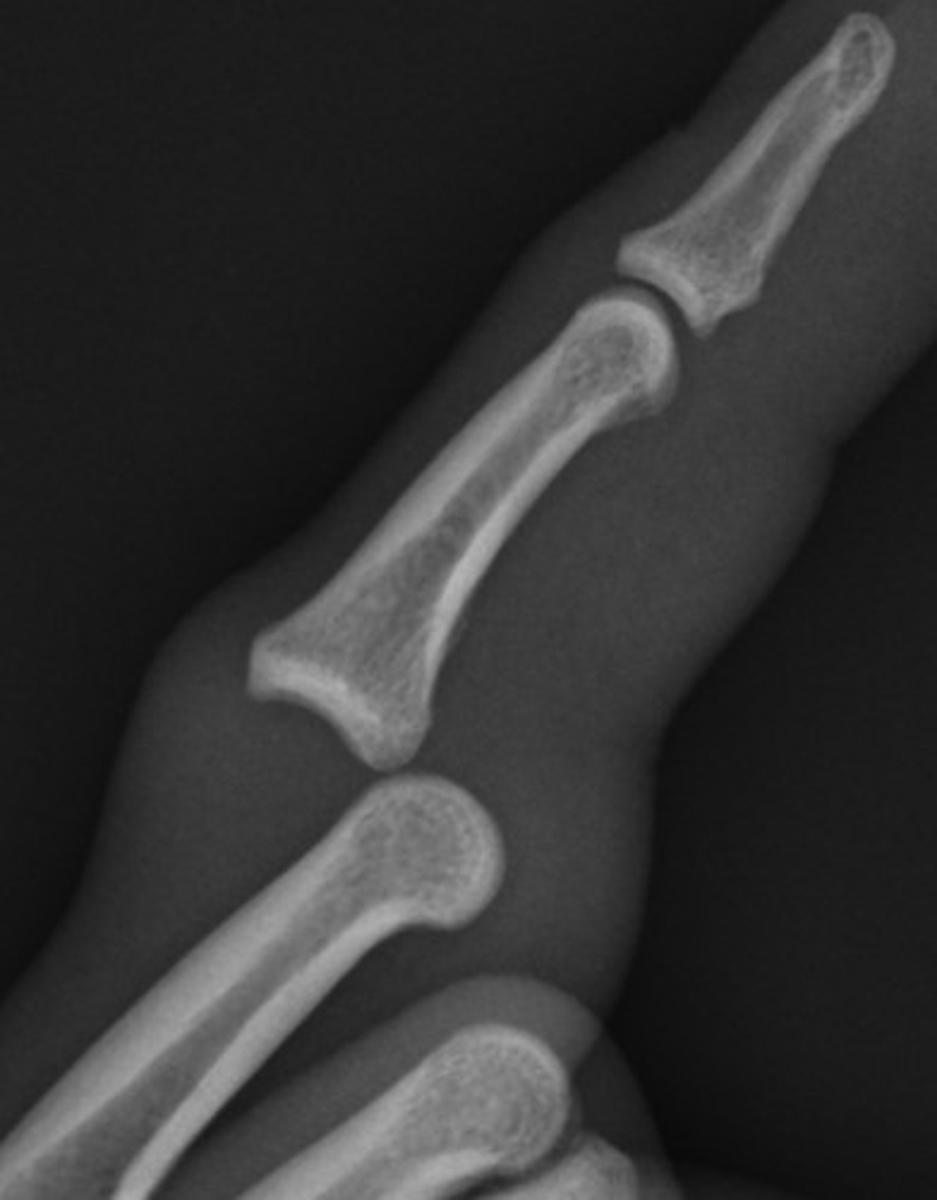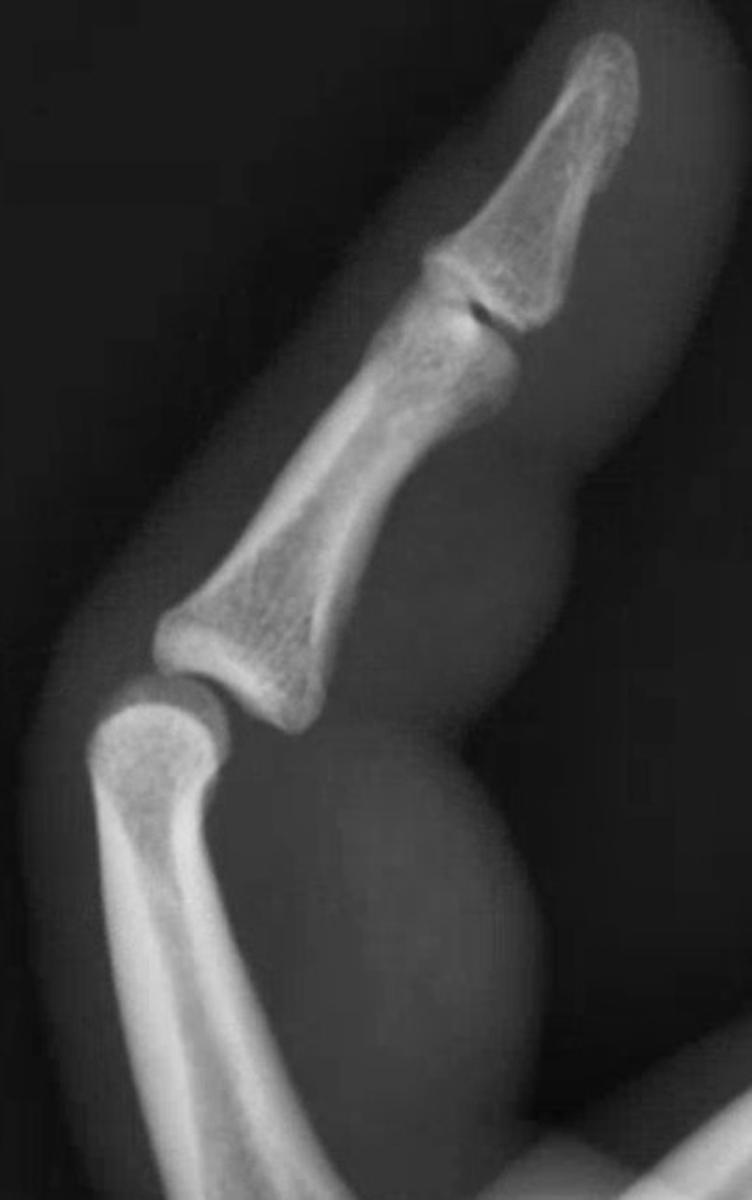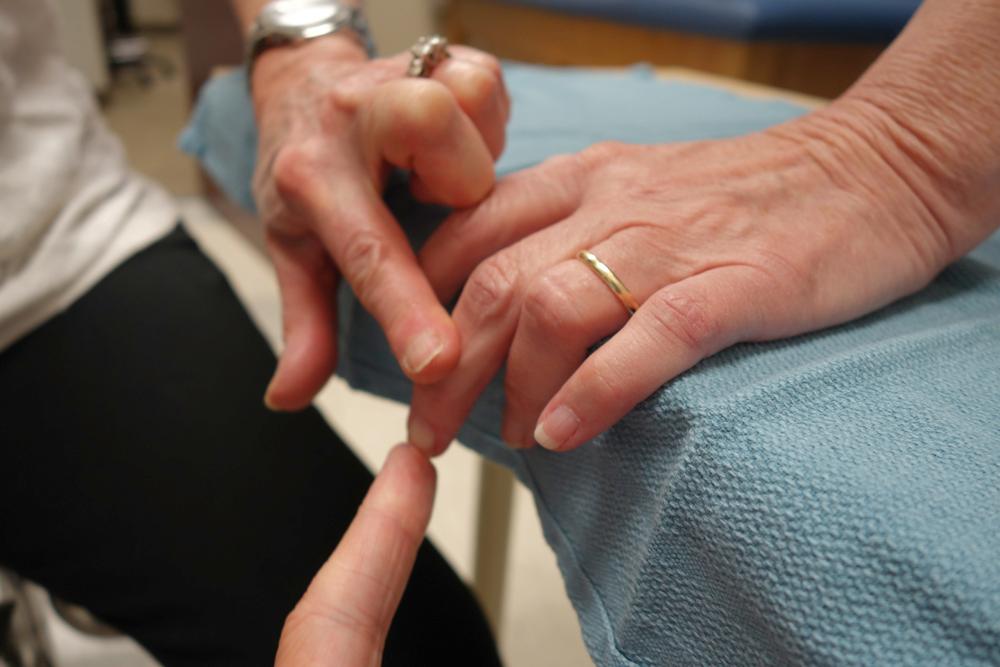Physical Address
304 North Cardinal St.
Dorchester Center, MA 02124
Proximal interphalangeal (PIP) joint injuries are common and in spite of seemingly minor injuries, these can affect the overall hand function. Stiffness is common with these injuries and there is often permanent residual swelling, changing the size of the digit. Patients often present in a delayed manner as it was assumed to be a “jammed finger” that would get better. When it does not improve as anticipated, they present with pain, stiffness, or residual deformity. Basic management principles are similar to other musculoskeletal injuries and include examination and imaging. The digit is evaluated for edema and the cascade for alignment of the finger in relation to adjacent digits. With flexion, the digits should point to the scaphoid tubercle and any scissoring or malalignment should be noted. While hand radiographs are appropriate for screening, radiographs of the injured digit are needed, and orthogonal views should be obtained to avoid missing subtle injuries. For finger injuries, three views of the digit are preferred.
The PIP joint is a complex ginglymus joint formed by the convex head of the proximal phalanx, concave base of the middle phalanx, volar plate, and collateral ligaments. There are associated bony attachments of the extensor apparatus (central slip) as well as the flexor digitorum superficialis (FDS). The osseous anatomy and relationship between the two bones impart stability to the joint.
The head of the proximal phalanx is in the shape of a trapezoid, with an intercondylar groove that allows it to articulate with the two facets of the base of the middle phalanx, with an intervening ridge. There is palmar tilt to the head of the proximal phalanx, which results in an average arc of motion of 0 to 100 degrees. In a recent paper by Dumont et al., they demonstrated that the PIP joint is nonconforming, with the base of the middle phalanx having a lesser curvature than the condyles of the proximal phalanx. This difference in curvature results in incongruity of the joint with range of motion. Furthermore, there is slight asymmetry between the condyles of the proximal phalanx, with the width of the radial condyles narrower in the index and long fingers, and wider in the ring and small fingers when compared to the ulnar condyles, allowing the digit to point toward the scaphoid tubercle with flexion.
The radial and ulnar collateral ligaments originate from the collateral recess of the head of the proximal phalanx and are essential for stability of the PIP joint against lateral force. The proper collateral ligament is a stout structure that has a broad insertion on the lateral base of the middle phalanx, while the accessory collateral ligament is a more diminutive structure that inserts on the volar plate and can be thought of as an extension of the joint capsule rather than a discrete ligament.
The volar plate of the PIP joint is a thickening of the capsule that prevents hyperextension of the joint. It is a fibrocartilaginous structure that has a robust insertion on the base of the middle phalanx through Sharpey’s fibers and proximally has radial and ulnar extensions known as checkrein ligaments that loosely blend into the periosteum of the proximal phalanx. The loose proximal insertion allows the volar plate to slide proximally with finger flexion.
The FDS and flexor digitorum profundus (FDP) traverse the palmar aspect of the joint. While the FDP continues to insert onto the base of the distal phalanx, the FDS has two slips that allow the FDP to pass through it at Camper’s chiasma, then coalesce and insert broadly onto the proximal half of the middle phalanx. The extensor apparatus over the dorsal aspect of the joint is a complex structure, with its most important components relative to the joint being the central slip and lateral bands, which are formed from both the extrinsic and intrinsic muscles of the hand. The central slip inserts on the dorsal base of the middle phalanx, while the radial and ulnar lateral bands pass dorsal/lateral to the joint to then insert on the base of the distal phalanx.
Dislocations and fracture-dislocations are described by the direction of the distal structure, in this case, the middle phalanx, such as dorsal, volar, and lateral. A special category of middle phalanx base articular fractures is the pilon fracture, where the central portion of the joint is injured, but the dorsal and volar aspects are intact.
The most common PIP dislocations are dorsal, typically occurring from an axial load on a hyperextended finger ( Fig. 80.1 ). This injury pattern necessitates complete rupture of the volar plate, and variable degree of injury to the collateral ligaments, sparing the central slip. It is common to have small fracture fragments at the base of the middle phalanx reflecting a volar plate avulsion injury. In some instances, the avulsed volar plate can become interposed in the joint upon attempt at closed reduction, necessitating open reduction of the injury.

A simple descriptive classification system has been developed to detail three types of dorsal PIP joint dislocations ( Table 80.1 ).
| Type | Description |
|---|---|
| I | Hyperextension deformity, joint surfaces still touch |
| II | Bayonet apposition of joint surfaces |
| III | Fracture-dislocation |
Volar dislocation is much less common than dorsal. These include volar dislocation with or without a rotatory component ( Fig. 80.2 ). This is the most common type of dislocation to result in an open injury. A volar-rotatory dislocation occurs when one collateral ligament remains intact. The typical mechanism of injury is torque on the finger, such as when the finger gets caught in something and the arm pulls away. This may result in a condyle of the proximal phalanx being button-holed between the central slip and the lateral band. The standard reduction maneuver, which includes traction, may tighten the “noose” that the extensor apparatus (central extensor tendon and lateral band) creates around the entrapped condyle, making the injury irreducible by closed means. The favored reduction maneuver includes flexion at the metacarpophalangeal (MP) joint as well as the PIP joint to relax the flexor apparatus.

If there is no rotatory component, then closed reduction is easier to obtain, but there should be a high suspicion for a central slip injury. The integrity of the central slip must be tested after closed reduction with active extension as well as the Elson test ( Fig. 80.3 ), which is performed by flexing the PIP joint and maintaining the MP and distal interphalangeal (DIP) joint in extension. If the central slip is intact, attempted extension of the digit at the PIP joint will leave the DIP joint supple due to the pull of the central slip on the middle phalanx. If the central slip is disrupted, the pull will be at the DIP joint through the terminal tendon and the joint will be rigid. Central slip injury necessitates immobilization of the joint after closed reduction. Missed or inadequate management of a central slip injury could result in future boutonnière deformity to the finger.

Become a Clinical Tree membership for Full access and enjoy Unlimited articles
If you are a member. Log in here